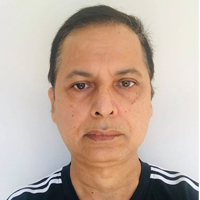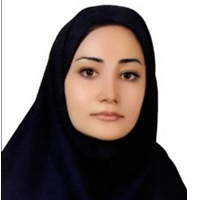Stemness of Mesenchymal Stem Cells
Published on: 29th December, 2017
OCLC Number/Unique Identifier: 7325064423
Mesenchymal stem cells (MSCs) are multipotent adult stem cells that can self-renew and differentiate into a variety of cell types including chondrocytes, osteocytes and adipocytes. MSCs reside in bone marrow, adipose tissues, cord blood, peripheral blood, placenta, Wharton’s jelly, fetal liver and lung among others. MSCs represent one of the most promising stem cells for regenerative medicine due to their multipotency, immunoprivileged properties and easy expansion in vitro. So far, MSCs are already in various phases of clinical application [1-4].
Autologous grafts in radiotherapy received breast cancer patients
Published on: 9th February, 2018
OCLC Number/Unique Identifier: 7347013999
German surgeon, Vincenz Czerny, transplanted a patient’s own lipoma located in the hip to it’s breast after gland excision due to mastitis in 1895. Dr. Vincenza reported that for at least a year he didnt observe any problem on the operated breast [1]. Injection of adipose tissue to the breast has been used in breast cancer patients during breast reconstruction and lumpectomy. And in cases of revision autologous tissues are used for reconstruction. In clinical practice, many breast cancer patients apply to the clinics mostly after radiotherapy for reconstruction. Rigotti et al used purified autologous lipoaspirates in breast cancer patients with late term complications of radiation therapy and observed increase in neovascularization and wound healing [2]. Panettiere and colleagues compared aesthetic and functional features of fat grafts in radiotherapy received breast cancer patients and control group. In the fat graft group, all clinical symptoms and aesthetic scores were significantly higher than the control group [3].
In plastic surgery especially after the surgical treatment of breast cancer, prosthetic techniques, various autologous flaps or combinations of both are performed for breast reconstruction. Particularly breast reconstructions following adjuvant radiotherapy have less success rates due to adverse effects of radiotherapy [4-10]. There are reports showing reduced complications rates with use of fat grafts before and after breast reconstruction with prosthesis in patients received radiotherapy after lumpectomy or mastectomy.
With that, in patients receiving radiotherapy after fat grafting, local complications such as fat necrosis, infection can be seen more [3,11]. It was reported that adipocytes may had paracrine and endocrine interactions with tumor cells and stromal elements [12]. The fat grafts used in breast cancer were thought to cause local recurrence, distant metastasis or development of new cancers; there was no relationship in the clinical series. There is aromatase activity in the adipose tissue. Thus, fat tissue is the main source of post-menopausal estrogen hormone. Tumor cells and surrounding tissue were found to be higher in aromatase activity. Therefore, when fat tissue is injected subcutaneous or under the gland rather than into the parenchyma local recurrence risk is low [2].
When fat tissue is injected to breast, a good physical examination and mammography should be performed. After fat injection, sometimes calcifications are formed as a result of undergoing necrosis and they interfere with malignancy. Therefore before and after the procedure, mammography must be taken for comparison and existing and or newly developed calcifications should be determined.
Role of toll-like receptors and their ligands in adipocyte secretion
Published on: 8th April, 2021
OCLC Number/Unique Identifier: 9031345560
Background: Adipose tissue is one of the main sites of energy homeostasis that regulates whole body metabolism with the help of adipokines. Disruption in its proper functioning results in adipose tissue remodeling (primarily hypertrophy and hyperplasia) which directly influences the secretion of said adipokines. Obesity characterized as chronic low-grade inflammation of the adipose tissue is one such condition that has far reaching effects on whole body metabolism. Inflammation in turn results in immune cells infiltrating into the tissue and further promoting adipocyte dysfunction.
Purpose: In our study we explored this adipose tissue-innate immunity axis by differentiating adipose tissue derived stem cells (ADSCs) into white and beige adipocytes. We further stimulated our cultures with lipopolysaccharide (LPS), flagellin, or meteorin-like, glial cell differentiation regulator (METRNL) to trigger an inflammatory response. We then evaluated Toll-like receptor (TLR) mRNA expression and secretion of interleukin (IL-6), interleukin-8 (IL-8), brain-derived neurotrophic factor (BDNF), and nerve growth factor (NGF) in these cultures.
Results: We found that TLR2 is the highest expressed receptor in adipocytes. Further, LPS and METRNL are strong activators of TLR2 in white and beigeBMP7(-) adipocytes. TLR4 was not significantly expressed in any of our cultures despite LPS stimulation. TLR9 expression is upregulated in ADSCs upon LPS and METRNL stimulation. IL-6 and IL-8 secretion is increased upon LPS stimulation in white adipocytes. METRNL activates both IL-6 and IL-8 expression in adipocyte cultures. Lastly, BDNF and NGF is secreted by all adipocyte cultures with beigeBMP7(-) and beigeBMP7(+) secreting slightly higher amounts in comparison to white adipocytes.
Conclusion: ADSCs and adipocytes alike are capable of expressing TLRs, but white adipocytes remain the highest expressing in both control and stimulated cultures. TLR2 is highly expressed in white and beige adipocytes whereas TLR4 showed no significant expression. LPS and METRNL trigger IL-6 and IL-8 secretion in adipocytes. Products of white adipocyte “browning” are capable of secreting higher amounts of BDNF and NGF in comparison to white adipocytes.
















